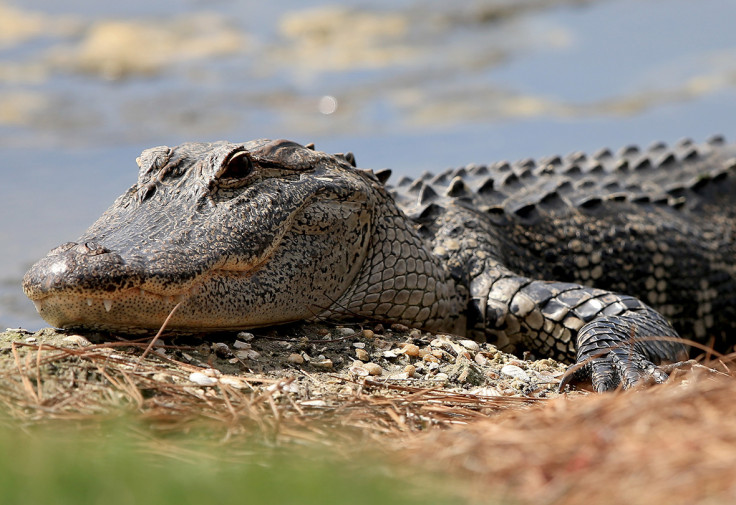Residents discover orange 'Trumpagator' bathing in South Carolina pond
Locals have nicknamed the alligator after the US President because of his seemingly 'orange' skin.

Residents of a small South Carolina town have been left shocked by a strangely-coloured visitor bathing in a local beauty spot.
The locals in Hanahan, around eight miles north of Charleston, spotted an orange-coloured alligator swimming in a pond close to a school and residential houses. The 4.5 ft (1.3m) long creature has also been seen nonchalantly ambling around the Tanner Plantation neighbourhood.
Technically more of a clay or a reddish brown, it this has not stopped locals nicknaming the beast "Trumpogator" – a reference to US President Donald Trump, whose 'orange' skin tone has been the subject of much discussion.
Although it is not clear what has caused the alligator's skin to discolour, two possible theories have been mooted.
Firstly that that the discoloration has been caused by a type of albinism — the term used to describe a noticeable loss of pigment melanin in the skin.
Although the disorder does occur in alligators, it is extremely rare, only affecting around 50-100 in the world, with many dying young in the wild. All known alligators with albinism are currently in captivity.
The other theory is that the altered skin colour is due to some sort of environmental factor, possibly algae, or a pollutant.
Jay Butfiloski, from the South Carolina Department of Natural Resources, said the colour may be the result of where the animal spent the winter, perhaps in a rusty steel culvert pipe.
Experts believe that the alligator will eventually shed its skin and return to a normal shade of greeny-black.
Orange "Trumpagator" spotted in #Hanahan has residents scratching their heads. Is it albino? Clemson fan? https://t.co/XBxFHlwzmg #chsnews pic.twitter.com/7PJr9oMahK
— The Post and Courier (@postandcourier) February 9, 2017
One local resident confirmed the animal's new nickname to ABC-affiliated TV station WCVB.
In 2011, an orange alligator reportedly appeared in Venice, Florida, and was labelled the first of its kind in the world. Other sightings have been recorded in Texas.
At the time of the incident, a Florida Fish and Wildlife representative told The Christian Science Monitor that the colour most likely came "from paint, stain, iron oxide or some other element in the environment that has left a coating on the animal, making it appear orange."
© Copyright IBTimes 2025. All rights reserved.






















